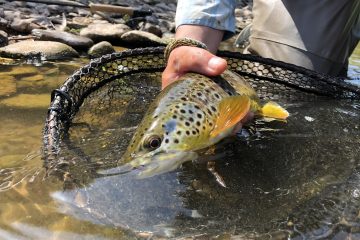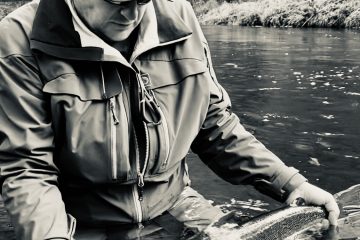Have you ever had a rising fish that you’ve covered over and over with the correct fly for the hatch that just won’t take? You might be overlooking one of several elements. Here are a few tips that you might want to try, to help you improve your fly fishing successes.
(Fly) Size matters!
A common mistake lies in the fly size and dressing. Commercially-bought flies are often too big and overly dressed to be anything like a replica of the hatch. Take an Iron Blue for example – commercially-bought patterns can be a bulky size 14, whereas in reality they’re more like a sparsely-tied 16/18 depending on the make of hook.
Grayling can be especially fussy later in the season. Take a really good look in the bubble-line for a few minutes and fish out some insects to get an idea as to the ideal size. Try to keep a good range of size, not just of patterns in your fly box – you’ll be surprised at what an F-Fly will catch in sizes 22 to 12.
If you’re looking for good quality flies, have a look at Fulling Mill Fishing Flies wide selection.
Drifting tips
Now for the big one – the Drift! Getting the right drift is not always as easy as it seems, and sometimes what looks like a perfect drift isn’t. A sneaky one that’s hard to spot is when your fly’s skating towards you across the current – it’s hard to notice sometimes because the fly is going the same speed as the water flowing downstream, but just skating towards you marginally.
Try to break the water down into 6-inch channels, really keep an eye on the rising fish and get a good fix on where you think it’s lying. Breaking the water down into smaller channels allows you to work out what’s going on with the river current where the fish is rising.
Getting the right angle to cast to the fish is also extremely important, and I like to get reasonably close to the fish I’m going to cast for. To do this you might have to lower your profile by crouching or kneeling, unless you’re wading in deep water on a big river.
A Trout’s blind spots are right in front of it’s nose and behind its tail, so when stalking trout on a river it’s generally best to cast from downstream. The less line you have out normally means a reduced chance of the fly dragging across the surface.

Casting improvements
If you think you have the fly right but the fish won’t take, and it keeps confidently feeding while ignoring your imitation, make sure you have a bit of slack in your leader and fly line to help eliminate drag. Get the fly to land closer to the fish so the drift is reduced in length. Practice some technical casts, like the wiggle cast or reach mend to control the tension in your line throughout the drift.
If you want to find out more about improving your casting technique, why not book a fly-casting lesson with The Devon School of Fly Fishing? Whether you’re an absolute beginner, or well-experienced and looking to improve, we’re sure that we can help you to improve.
Good luck and May your drift be perfect.

